When you look at it a certain way, the opening 10 minutes of Return to Monkey Island are an incredible meta-joke 30 years in the making. I have spoken at length about my hatred for the theme park ending of Monkey Island 2, which was the last time I touched a Monkey Island game made by Ron Gilbert1, and various interviews in the run-up to the release of Return to Monkey Island didn’t do anything to shake my impression that Ron Gilbert has theme parks on the brain. This did not bode at all well for Return, and so my heart sank when the very first screen of Return that you see, 10 seconds after clicking that “New Game” button, is this:
Oh, no. If you’re not familiar with this screen, it’s a very direct and literal continuation from that much-loathed ending to Monkey Island 2. You’re controlling a miniature version of Guybrush as he runs around a theme park with his brother Chuckie, and Gilbert opens the game with some gross-out humour straight out of an Adult Swim animated show as you go into a toilet to look for money so that you can buy snacks. This is followed up by an actually-not-that-bad tutorial as the game teaches you how an adventure game works (if you’d somehow forgotten), but those first ten minutes looked almost exactly like the kind of game I was afraid Ron Gilbert2 would make: that he wouldn’t be able to let go of the past, and that he’d just repeat his worst excesses from a series that was somehow already feeling pretty tired just one sequel in.
But Return is smarter than that. It’s so smart, in fact, that I can only see the decision to open the game with the ending from Monkey Island 2 as a deliberate fake-out aimed at forty-year-old Monkey Island series veterans, because it makes no sense otherwise. That goes for most of Return in general; I’ve seen it described as a love letter to the series, but I don’t think that quite captures what Return actually is. It is a game that seems almost exclusively targeted at people who played the original Secret of Monkey Island as kids back in the 90s, and who have since grown up and are now approaching — if not already fully entrenched in — middle age, and who want to revisit the classic adventure game series from their youth. Return delivers on this — but it’s far from a lazy nostalgia trip that simply includes all of the same locations and characters and jokes in a modern 2D point and click adventure game. I mean, it does do all of that, but the context in which it is presented to the player was quite unexpected. To me, anyway.
After spending the first ten minutes yanking my chain, Return to Monkey Island settled into a much more familiar routine. It’s an adventure game split into five parts, and once again stars Guybrush Threepwood as he makes yet another attempt to discover The Secret of Monkey Island. He starts the game in exactly the same place as he did Secret: on Melee Island, talking to the lookout on the hill in front of the big fire. But something’s very different this time around: this is a visibly older Guybrush, sporting a grey fuzz of stubble on the lower half of his face and some highlighting above his mouth that hints at laugh lines. He sounds older too, thanks to voice actor Dominic Armato also having aged along with Guybrush. Just like in Secret the first task he gets is to go to the SCUMM bar and talk to the pirate leaders, but when he gets there he’s in for a shock: the grizzled old pirate leaders from Secret have been forced out and replaced by a younger set of highly-qualified modern professionals who think he’s a joke, and who aren’t interested in the Secret at all beyond its monetary value. There are a couple of other leftovers from the old SCUMM bar like Cobb (AKA Mr “Ask Me About LOOM”) and the cook, who both bemoan the changing times but feel like they have no other choice but to go along with them.
Once you get out into Melee Island proper it’s a similar story: everything is the same, but different. The locations you can visit are identical to the ones in Secret (although Meathook’s and the sword trainer’s shacks have been removed from the map) but they all show signs of the relentless march of time. The Voodoo Lady’s shop is going out of business. The general store already has. The church is a boarded up derelict. Stan has been arrested for fraud and imprisoned in the jail, and all of his ships have been impounded. Elaine is no longer governor, having been replaced by Carla the Swordmaster. Her old shack is now the Museum of Pirate History, where items from Guybrush’s previous adventures are all treated as relics of a lost world straight out of a storybook, one which no longer exists.
Return has a slightly odd relationship to the other Monkey Island games. There’s a scrapbook accessible from the main menu that gives a three or four sentence description of each of 2, Curse, Escape and Tales, ostensibly for the purposes of catching you up on the story so far, but outside of the intro the only game that actually matters to the plot of Return is Secret. Every other game is ignored beyond the odd scattered reference here and there; in the case of Escape there are large portions of it that are indirectly retconned. Even 2 barely features beyond the intro, Guybrush’s blue jacket, the returning character of Wally, and a joke about the Kate Capsize puzzle (of all the things to call out…).
And this is important for understanding what Return is, when you get down to it. It is very specifically a revisit of Secret of Monkey Island, and none of the other games — but it is a revisit, not a retread. The opening act of Return is the old saying about how you can never go home again, but in the form of a game. The world has moved on, and while Return has a sentimental streak a mile wide and does enjoy bringing back old characters simply for a one-off joke much like any other Monkey Island game would, this sentiment is tinged with a bit of uneasiness, or sadness. Video game protagonists are usually immortal and ageless — Mario would be drawing a pension by now if they weren’t — and the worlds they inhabit are similarly unchanging. If they do age, as the protagonists of series like Uncharted and the Assassin’s Creed Ezio trilogy do, then we at least get to see them do it in regular increments as successive games are released. It’s bittersweet to Return to Monkey Island after a 20 year absence and see every one of those 20 years all hitting at the same time.
(Before I get a bit too sentimental about this myself: some of this is my reading of the subtext of the game and will be coloured by, well, this being my exact experience with a lot of stuff in my life at the moment. However some of it is also outright stated as text by the writers of Return after you finish it, so it’s not entirely my own overactive imagination doing the work here.)
This acknowledgement of the passage of time is one half of what elevates Return above any other modern adventure game I’ve played. I think that if Return did try to just pick things up where they left off it’d be a much more mundane experience — just another Monkey Island game, for all that it’s been a long time since the last one. But it is trying to say something, to be a little more than a funny pirate adventure this time around, and while it occasionally does fall flat on its face I appreciate that it didn’t go for the safe option of just remaking Secret of Monkey Island all over again.
The other half of what makes Return stand out from other modern adventure games is its puzzle design. I have just finished playing through all 13 LucasArts adventures so I’d like to think I have a pretty good handle on what good puzzle design looks like now, and the puzzle design in Return is absolutely outstanding, some of the best I’ve ever seen. Hell, it might actually be the best I’ve ever seen in terms of challenging the player without frustrating them. It helps that it’s the beneficiary of a lot of work other games have done in terms of verbal hints and subtle signposting in object placement and descriptions that nudges you in the right direction; nevertheless, I can’t really think of an instance in Return where the solution to a problem wasn’t at least partly obvious after a few moments of prodding at it. But only partly, since a full solution usually requires visiting multiple areas to get all of the pieces, whether those be inventory items or nuggets of information from other characters, and it’s figuring out how exactly everything fits together that takes time. Part 4 of the game is a particular highlight for this, where the puzzles sprawl across multiple islands and locations and you have three or four puzzle strands to work on simultaneously. Sometimes I did get distracted and go off down a blind alley for up to ten minutes, but once I got the solution I never felt like it was cheap or illogical; the biggest crime Return commits is occasionally not making it obvious that certain characters have gone from a non-interactive to an interactive state, or bringing characters into one act of the game who aren’t relevant until the following act, and it doesn’t do it that often. Remarkably, I think Return is the first adventure game I’ve played that didn’t have a single instance of Adventure Game Logic in it. Not even Secret can say that.
I think this otherwise admirable focus on mostly-logical puzzle solutions does come with a tradeoff, though: Return has a decent sense of humour that fits with the drier tone of the original trilogy, and it did elicit a chuckle from me once or twice, but on the whole it’s not quite as funny as Secret or Curse. I’m not going to castigate it too much for falling short as those are both brilliant games with some very clever jokes buried inside them, and what’s present in Return is perfectly fine, especially since, having just finished Escape, I know that it could have been far, far worse. It’s just that, while the puzzle solutions in Return are logical, they’re also not particularly memorable. There’s nothing here on the level of the drowning puzzle in Secret, or the Game Over puzzle in Curse, and I felt that loss rather more keenly than I probably should have given that I tend to get really frustrated when “funny” puzzle design goes wrong (as with the monkey wrench puzzle in 2).
In terms of look and feel, I think Return falls into the “good, but not great” category. The game’s paper doll visual style was very polarising when it was first revealed and I was one of those who initially had a negative reaction to it, but I also remembered that I’d had the same reaction to Curse’s visuals in 1997 and I now think that it’s the best-looking adventure game ever made, so I resolved not to let Return’s graphical style dissuade me too much — and I was pleasantly surprised. Return’s characters and environments all look good — the redo of Melee Island and the locksmith’s shop are particular standouts — and are only slightly let down by the slightly primitive animations; the characters all look like paper dolls, and they move like them too. The real weak link is the close-ups the game goes for whenever it feels the need to provide the visuals with a bit more detail, as these usually end up achieving exactly the opposite as the game zooms in on Guybrush’s face and it becomes a blurry mess.
Return’s interface is an… interesting attempt to balance the stripped-down controls of modern adventure games with the tooltip humour of Monkey Island; in terms of controls the game only has “LOOK AT” on the left mouse button and “USE/PICK UP” on the right mouse button, but it will always give you a context-sensitive tooltip popup containing a description for the particular action you’re trying to accomplish, and the writers have fun with custom descriptions for a lot of otherwise pointless interactions. Double-click makes Guybrush move at double speed to your cursor location (although there’s no teleport-to-next-area behaviour here) and full stop skips through dialogue lines just as it did in SCUMM – you can even page back through dialogue history if you’ve skipped too much and think you missed something important. And while Return makes the mistake of having a screen-blocking inventory panel just as Curse did, it at least only blocks half of the screen this time instead of all of it, making it reasonably painless to deal with. It’s very pleasant to play, and while I don’t think that the tooltips quite work (I think it’s the font that bugs me most of all) I’m happier that Return attempted to come up with a solution that let it keep them instead of just throwing them away.
The sound, on the other hand, is a bit more hit and miss. I have absolutely no complaints about Return’s voice acting, which is delivered with great energy by a surprisingly high-powered cast who all fully grasp the mythical concept of “comic timing”. It’s the music, of all things, that lets Return down; Monkey Island is a series full of absolutely incredible music, where even the worst game had a soundtrack that would probably make my top 100 (I’ve been listening to Escape’s soundtrack a fair bit over the last week and it’s grown on me), and yet the best thing I can say about Return’s soundtrack is that it is there. It’s mostly a set of low-key orchestral remixes of other Monkey Island themes — Melee Island at night, Woodtick, LeChuck’s theme etc. etc. — but because of this every single remix just feels like an overly watered down version of the original. I can’t think of a single standout track from Return that felt like it had its own identity, and while it does the job of filling dead air and providing an appropriately Monkey Island atmosphere I think this is one area where referencing the past was very much the wrong thing to do.
That aside, though, up until the last ten minutes Return was a game that felt astonishingly free from shortcomings. Nearly every single part of it felt well-thought-out; it looked good, felt good to play, had a decent sense of humour, and the puzzle design had me scratching my head without feeling like it was wasting my time. It helps that it’s been delivered with production values significantly over and above what most of the other developers in the modern adventure game space can deliver; it doesn’t match the comparative highs of LucasArts in their prime, but it blows any recent competition out of the water. (This can’t have been a cheap game to make and, given the economic pressures that eventually did for LucasArts adventure games, I’ll be interested to see if it recoups its budget.) Most importantly of all, it felt like a dramatic return to form for Ron Gilbert; in spite of the opening, the bulk of Return feels like it was made by the guy who came up with Secret rather than the man responsible for the worst parts of Monkey Island 2.
Which made the ending rather more of a punch in the gut than it should have been. I really should have seen it coming, and I think I’d be significantly more okay with it if I had been in any way expecting it, but I’m ashamed to say that, with Return, Ron Gilbert managed to bamboozle me twice. He fooled me into thinking this was going to be a self-indulgent repeat of his worst excesses, and then he double-fooled me into thinking that actually he’d learned how to moderate himself since Thimbleweed Park – or at least that he had the equivalent of an editor smacking his hand every time he tried to type the words “THEME PARK” into a keyboard. But it turned out there was a third layer to it, and that the entirety of Return is intended to lull the player into a false sense of security so that when the standard Ron Gilbert-brand Bullshit Ending turns up it’s as obnoxiously annoying as it possibly can be. The previous eight hours had been some of the best adventure gaming I’d done in years so, while I’ve had a few days to come to terms with it and am less incandescently angry about it than I was immediately after finishing the game, I still think it’s absolutely tragic that he was allowed to end it this way. I guarantee it’s going to be the most divisive thing about Return, something that will be argued over for years afterwards just like Monkey Island 2’s ending, and I’m really worried that it’ll eclipse the excellent work that had been done up until that point.
For me, I think it does materially diminish the rest of the game — but not by that much; we’re talking about the difference between Return being a top 3 game or a top 5 game this year. It helps that I fall squarely into the target market for it, and it also helps that I played through Secret of Monkey Island relatively recently; if neither of those things were true, then I think I would have enjoyed Return to Monkey Island significantly less than I did. Fortunately they both are, so I had a great time with it. I think I’d put it in third place behind Secret and Curse, but it’s a close third place. That’s not something I ever expected to say when I bought it; Return to Monkey Island handily demonstrates that it’s very possible to make something that can stand alongside the old classics, and sets the standard for modern adventure game developers to follow, just like a Monkey Island game should. Return is a worthy successor to the name, and a great game.

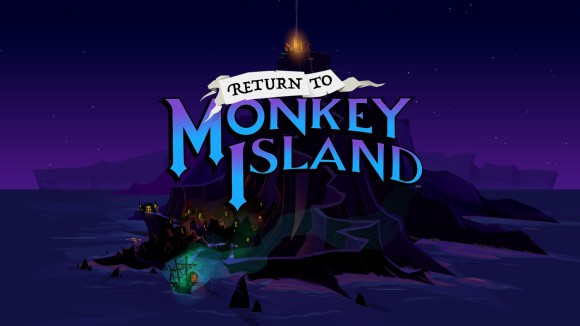
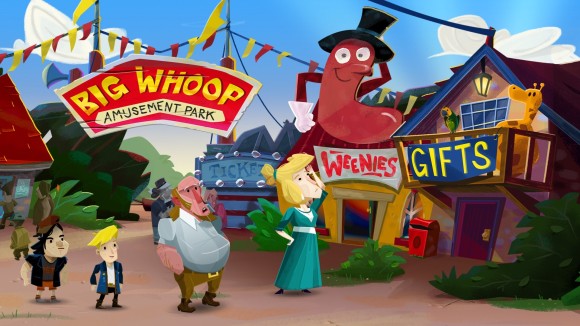
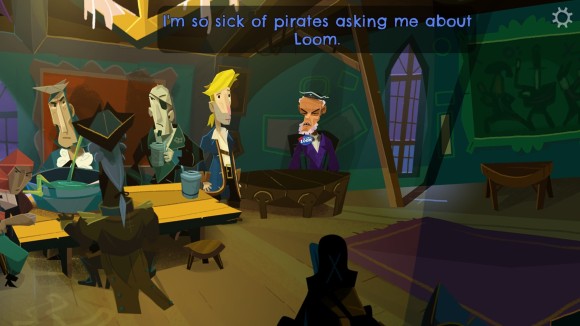
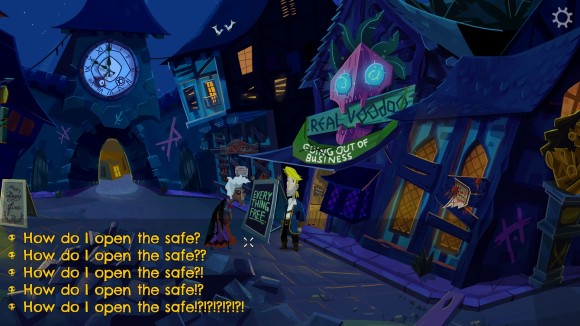
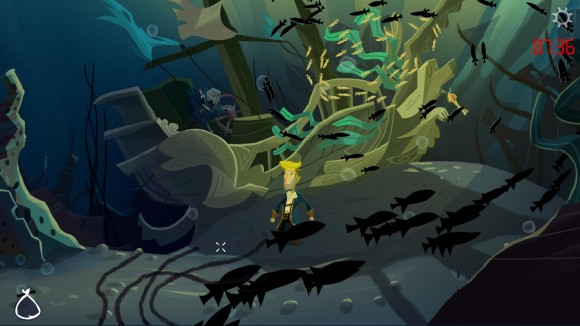
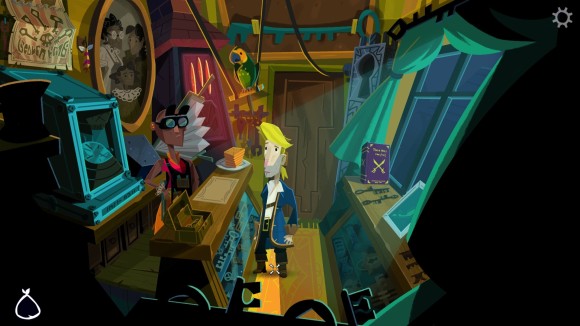
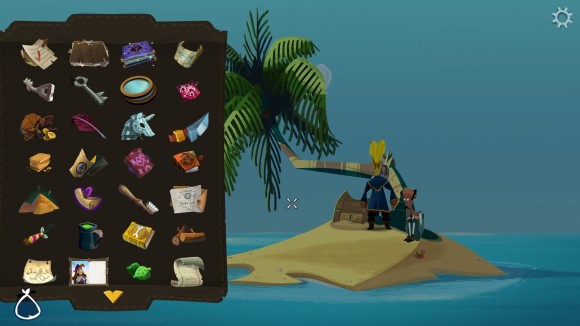
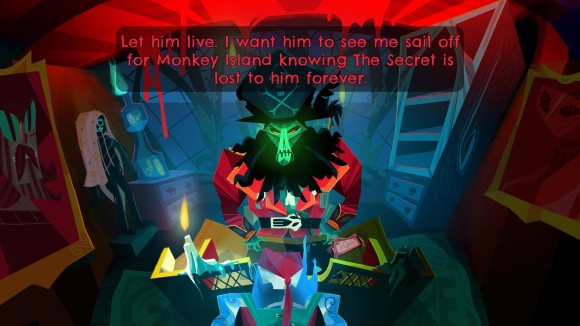
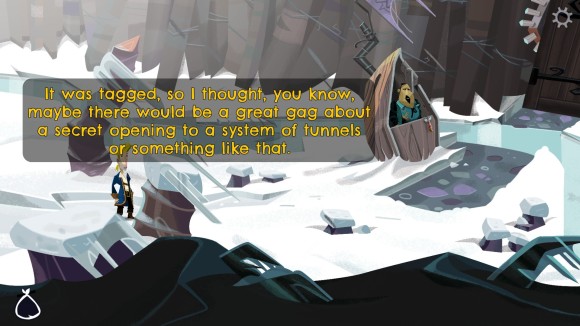
I still need to finish Escape and Tales in my chronological replay, but your paragraph on the ending is confirmation of my greatest fears. I dread discovering what stupid horseshit Gilbert has come up with this time.
My wife and I try to “co-operatively play single-player games” occasionally – Firewatch, Brothers Tale of Two Sons, Stray, and such.
We were just discussing why we seem to enjoy and finish games like Samorost and Botanicula, but peter out on games like Monkey Island. We think it’s the running around – in Stray, Firewatch etc running around is part of experience, and is made beautiful and there are triggered scripts etc. In Samorost & Botanicula, puzzles are plentiful, intellectually engaging, and tend to be mostly screen based. In traditional point & click though, there’s just so much running around from screen to screen to screen, to get the nugget of content & funny; work which seems to be easier to process alone, but tends to make a second person restless when played co-operatively. So far, the only traditional point & click we’ve finished is the Day of the Tentacle remake.
Oh, and FWIW, the game plays great with controller on TV, better than virtually any other Point & Click. For once, we did not feel interface was in our way .
.
Just finished the game.
It was probably the best point&click adventure I’ve ever played. And the ending… I don’t get it. Those people wrote some good jokes. They seem smart. Why did they do this. It’s like a writer writes a detective story proudly presents a story where the narrator is the murderer and you realize they never heard of Roger Ackroyd. Was it intended to be disappointing? Well good job then.
I was looking forward to this finale to your Lucasarts series! I just completed the game, and thoroughly enjoyed it. Clearly lovingly made, with lots of quality of life fixes and sensible puzzles. Maybe too sensible though, as I felt the game was a tad on the easy side. I feel it could really have used some more logic puzzles, though I guess that’s not what this series is about. Also I have to add that both the writing and voice acting were top notch – I didn’t fast forward through pretty much any dialogue, which is rare. Unlike in most games, it was actually really enjoyable to listen to everyone talk.
I stumbled upon your blog while looking for something to soothe the disappointment of Return’s ending, and I have to say your write-ups of the other LucasArts titles did the job nicely. The line in your Escape review about playing some fucking stinkers caught me by surprise, and I’m still chuckling 30 minutes later. Well done!
I had just finished the game yesterday, and was researching around to get a better understanding, insights and opinions about the Return’s ending and how it correlated with the other games on the series, and I found your blog. It was a pleasant surprise to find it and read you post about the game, and some other good posts too. Glad I found this, putting it on my favourites to check from time to time happy holidays!
happy holidays!
Sorry to hear you never understood the MI2 ending and got stuck in your childhood trauma. Hope you’ll understand it one day! Cheers.